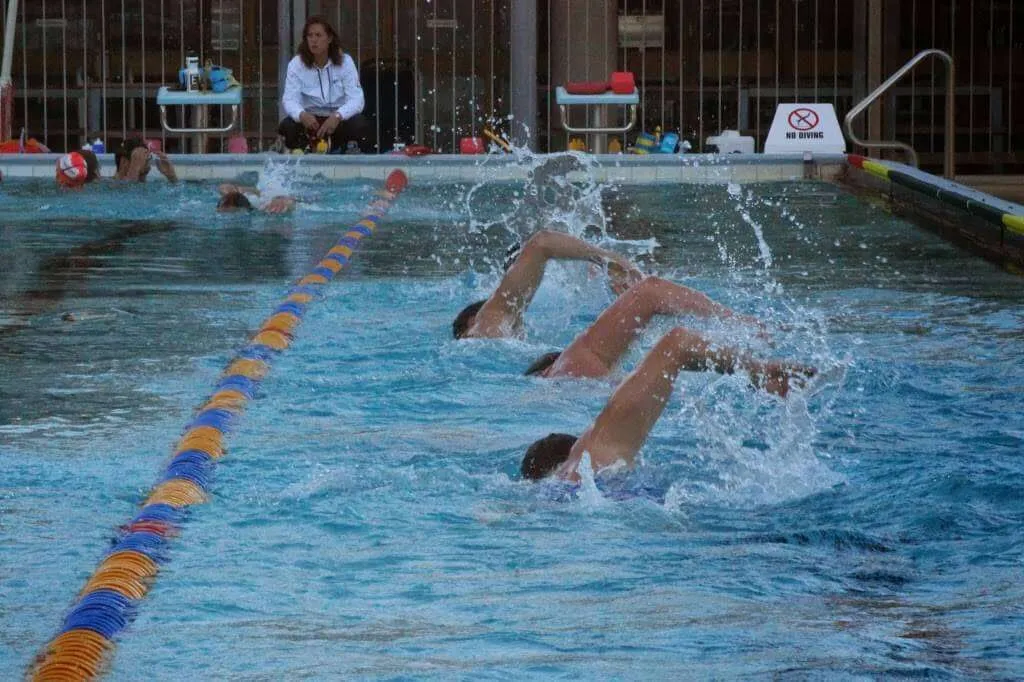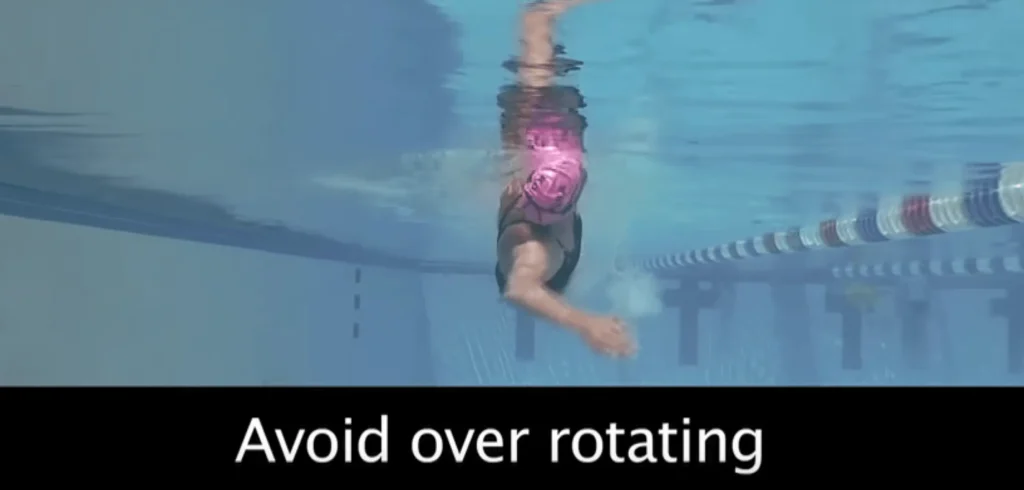The freestyle stroke is one of the most commonly used competitive and recreational swimming techniques. While it may seem simple, mastering it takes practice, technique, and focus. When done correctly, the freestyle stroke can be a powerful and efficient way to move through the water. However, swimmers often make common mistakes when performing freestyle strokes that can hinder their performance and potentially lead to injury.

Incorrect Body Position
One of the most common mistakes swimmers make when performing the freestyle stroke is maintaining incorrect body position in the water. Proper body position is crucial for reducing drag and increasing efficiency in swimming. When swimming freestyle, your body should be long and taut, as streamlined as possible, with your head in line with your body and your hips and legs close to the water’s surface. Many swimmers make the mistake of lifting their heads too high or letting their hips and legs sink, creating unnecessary drag and slowing them down.
To correct this mistake, focus on keeping your head neutral, face down, and eyes looking slightly forward while swimming. From head to toe, your body should be parallel to the water’s surface, with your hips raised slightly to help you glide through the water more easily. Practice swimming drills that emphasize proper body position, such as swimming with a pull buoy and swimmers snorkel to help you maintain a streamlined body position.
Incorrect Breathing Technique
Proper breathing technique is essential for swimming any stroke, but it is especially important for the freestyle stroke. Many swimmers make the mistake of holding their breath or taking shallow breaths while swimming, which can lead to fatigue and decreased performance in the water. When swimming freestyle, exhale continuously while your face is in the water, and inhale quickly when you turn your head to the side to breathe.
Another common mistake swimmers make is lifting their heads too high out of the water when breathing. This can cause their hips to sink and create more drag in the water, slowing them down. To correct this mistake, focus on keeping one goggle in the water while turning your head to the side to take a quick breath before returning to a neutral position in line with your body.
Over-rotation
Over-rotation is another common mistake many swimmers make when swimming the freestyle stroke. While some rotation of the hips and shoulders is necessary for generating power in your stroke, too much rotation can cause you to lose balance and slow down in the water. Over-rotation can also strain your shoulders and lead to injury over time.

Often, swimmers confuse hip roll and rotation. This can lead to rolling too much on their side and “gliding” too long. That causes too much deceleration, thus creating more drag in the water. Today, the best swimmers use just enough rotation and more of a shoulder shift. Keep your body rotation balanced and controlled while swimming freestyle to avoid over-rotation. With each stroke, your hips should rotate slightly from side to side, but your shoulders should remain relatively stable and parallel to the water’s surface. Practice drills emphasizing bilateral breathing and balance in the water to help you maintain proper rotation while swimming the freestyle stroke.
Connecting the core & hip rotation muscles with a shoulder shift and reach, plus a high elbow catch and pull, is essential for accessing the powerful muscles of the lats, upper back, and torso throughout a race of any distance. The recommended shoulder shift and reach can be practiced perfectly on the Vasa Swim Ergometer and/or Vasa Trainer. This makes it easier to integrate that efficient technique when swimming in the pool or open water.
In this video, Coach Karlyn Pipes shows how to perform a proper, powerful body rotation in Freestyle, similar to that used by the best swimmers and top triathletes.
Insert this video here:
Incorrect Arm Placement
Proper arm placement is crucial for generating power and propulsion in the water while swimming the freestyle stroke. Many swimmers make the mistake of crossing their arm over the centerline of their body or dropping their elbow during the recovery phase of the stroke, which can decrease the efficiency of their stroke and slow them down in the water.
To correct this mistake, align your arms with your shoulders and pull straight back through the water with each stroke. Your fingertips should enter the water first, then your hand and forearm, creating a smooth and efficient pulling motion. Practice drills emphasizing high elbow position and proper arm placement to improve your freestyle stroke technique.
In this video, Coach Pipes explains how to set up a proper stroke with correct arm placement.
Insert this video here:
Poor Kick Technique
While the arms play a significant role in propelling you through the water while swimming the freestyle stroke, the legs are also important for generating power and maintaining balance in the water. Many swimmers make the mistake of kicking too forcefully or too slowly, or they splay the legs to the side, all of which will lead to increased drag and decreased stroke efficiency.
Keep your legs straight and close together while kicking from the hips to improve your kick technique while swimming freestyle. Your feet should be flexed slightly and pointed behind you to help you move through the water more efficiently. Practice kicking drills with a kickboard or fins to help you strengthen your legs and improve your kick technique in the water.
Shop Vasa Products Today!
The freestyle stroke is a versatile and powerful swimming technique that swimmers of all levels enjoy. Correcting the most common mistakes, such as incorrect body position, improper breathing technique, over-rotation, incorrect arm placement, and poor kicking technique, will improve your freestyle stroke technique and make you a more efficient and effective swimmer.
If you want to enhance your swimming skills and improve your performance in the water, consider incorporating the Vasa SwimErg or Vasa Trainer Pro into your training routine. Vasa indoor swim training machines are designed to provide a lifetime of reliable, functional service, empowering individuals to get stronger, better, and faster in sports, fitness, and injury rehab. With Vasa training, you can maintain consistent, convenient training to take your swimming to the next level and achieve your goals in the water. Contact us to learn more about our quality products and how we can help you become a better swimmer. Remember, quality costs less, and investing in your swimming technique with Vasa products can lead to a lifetime of improved performance and enjoyment in the water.